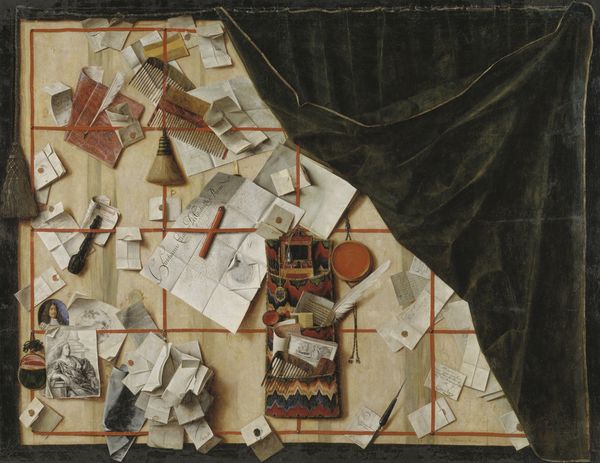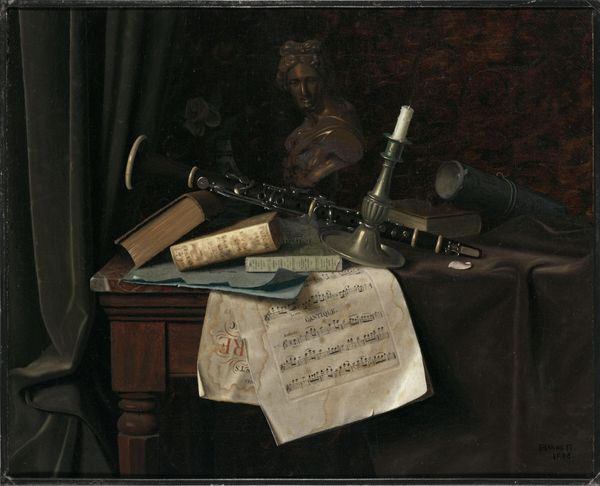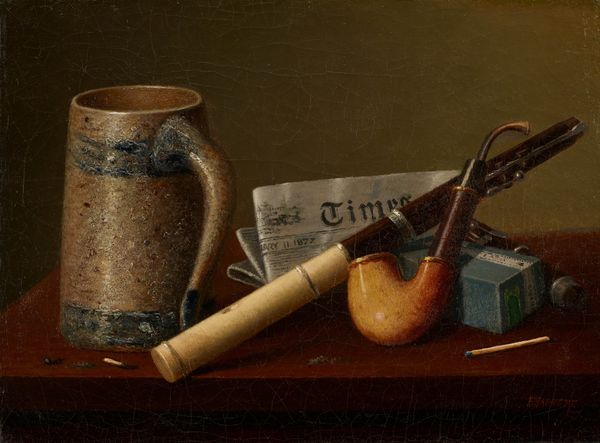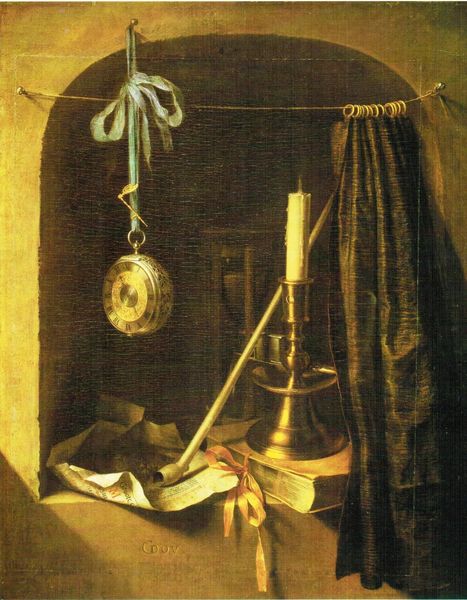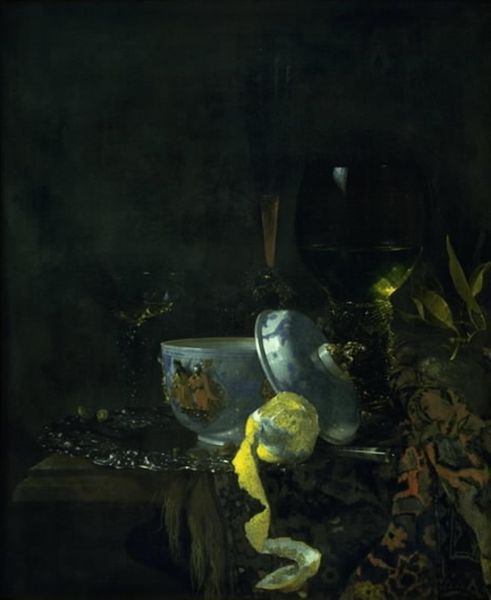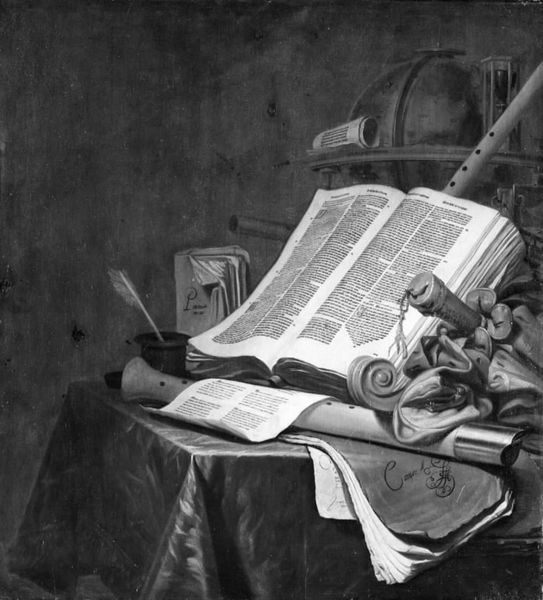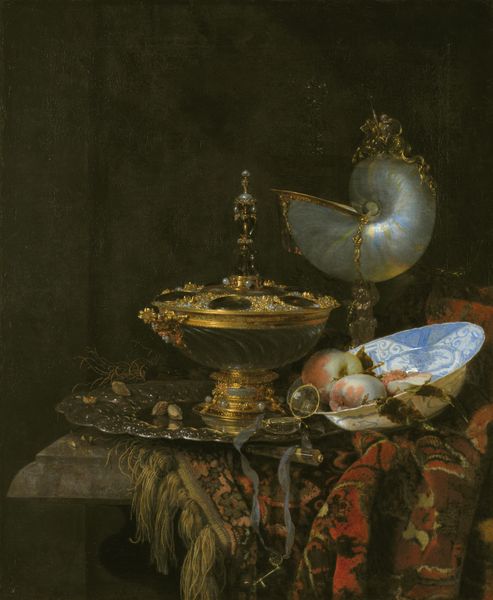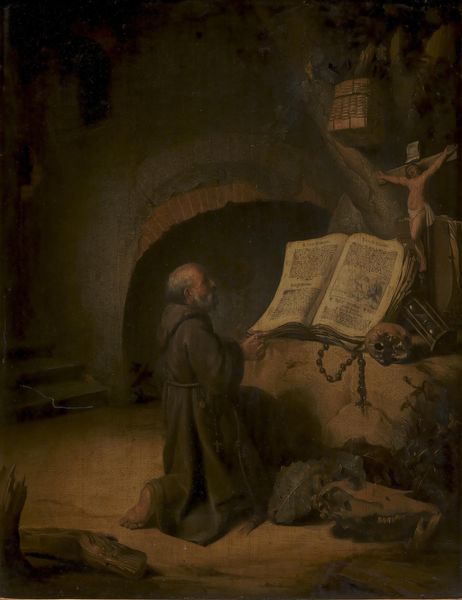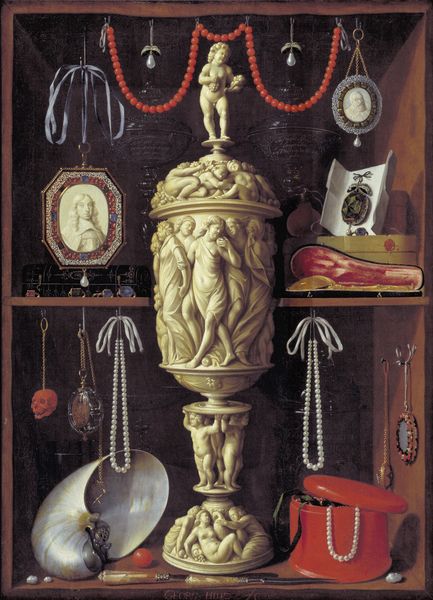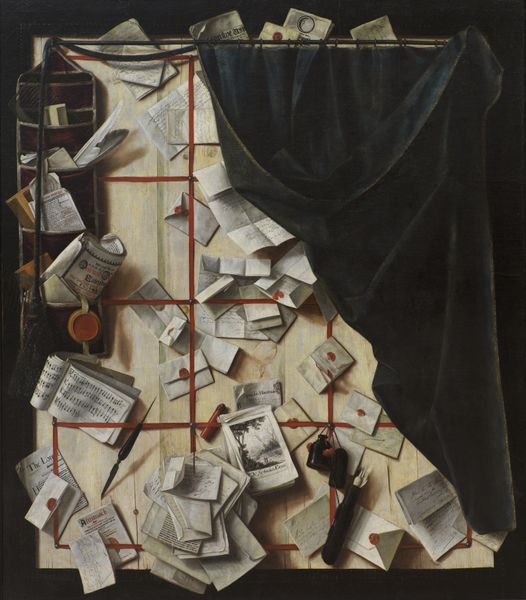
oil-paint
#
dutch-golden-age
#
oil-paint
#
oil painting
#
vanitas
Copyright: Public domain
Pieter Claesz created this still life painting known as 'Vanitas' in the 17th century, a period when such images were popular in the Netherlands. The objects in the painting aren't casually arranged; each one carries a symbolic weight relating to the fleeting nature of life and the emptiness of earthly pleasures. The skull, of course, is a direct reference to mortality, while the overturned glass, the extinguished candle, and the musical instrument all represent the transience of sensory experiences. Even the books, open to the phrases 'Memento Mori,' remember death, and ‘Vanitas,’ vanity, remind us that knowledge and intellectual pursuits are also temporary. Claesz was working in a society deeply shaped by the Calvinist emphasis on personal responsibility and awareness of sin. These paintings served as moral reminders, urging viewers to reflect on their lives and values. Understanding this artwork means looking into the cultural and religious context of the Dutch Golden Age, along with researching the iconographic traditions that gave these objects their symbolic meaning. The visual language speaks to the time, and the historian's role is to decode it.
Comments
No comments
Be the first to comment and join the conversation on the ultimate creative platform.

